24.01.2018
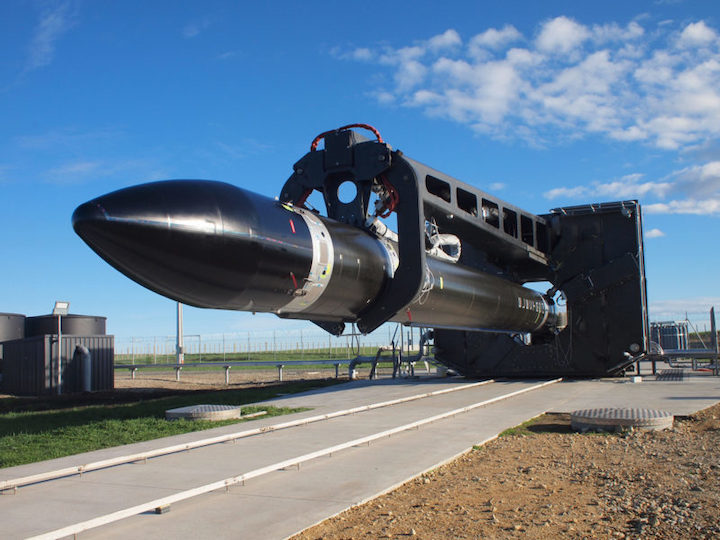
Rocket Lab revealed that its first mission of 2019 will be a dedicated launch of a 150kg satellite for the U.S. Defense Advanced Research Projects Agency (DARPA). DARPA’s Radio Frequency Risk Reduction Deployment Demonstration (R3D2) mission is scheduled for launch in late February and intends to space-qualify a prototype reflect array antenna to improve radio communications in small spacecraft.
The mission, the first of monthly Electron launches this year, will lift-off from Rocket Lab Launch Complex 1 on the Māhia Peninsula of New Zealand. The mission could help validate emerging concepts for a resilient sensor and data transport layer in Low Earth Orbit (LEO) – a capability that does not exist today, but one which could revolutionize global communications by laying the groundwork for a space-based internet.
“Rapid acquisition of small satellite launch capabilities is increasingly important to US Government organizations like DARPA. The ability to rapidly space-qualify new technology and deploy space-based assets with confidence on short notice is a service that didn’t exist for dedicated small satellites until now,” says Rocket Lab Founder and Chief Executive Officer (CEO) Peter Beck. “We’re honored to provide Electron’s agile and flexible launch service to DARPA and we look forward to delivering the innovative R3D2 payload to orbit.”
Quelle: Via Satellite
----
Update: 8.03.2019
.
Rocket Lab launch of DARPA satellite slips
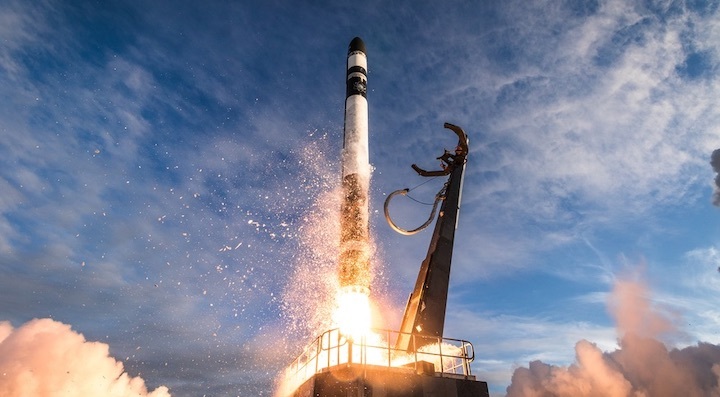
WASHINGTON — Rocket Lab’s first launch of the year, which was scheduled for late February, has been pushed back to the second half of March because of the delayed arrival of its payload, an experimental military satellite.
The Defense Advanced Research Projects Agency said March 5 that its Radiofrequency Risk Reduction Deployment Demonstration, or R3D2, satellite arrived in New Zealand March 4 to begin integration with Rocket Lab’s Electron vehicle. The launch from Rocket Lab’s Launch Complex (LC) 1 in New Zealand is now scheduled for the second half of March.
Rocket Lab confirmed the new schedule March 6. “Following a delay to payload arrival, the R3D2 spacecraft is now at LC-1 and integration is underway,” the company tweeted. In a later statement, the company said the launch would take place between March 16 and 30 (U.S. time), with four-hour windows each day from 6:30 to 10:30 p.m. Eastern.
When Rocket Lab announced the launch in January, the company was targeting late February for the launch. However, a DARPA spokesperson said that the launch was postponed “to provide the prime contractor with additional time to complete payload and spacecraft validation and verification.”
Northrop Grumman is the prime contractor for R3D2, which will test technologies for deployable antennas. Once in orbit, R3D2 will deploy a Kapton membrane that will expand to a diameter of 2.25 meters to demonstrate the ability to small satellites to carry large deployable antennas needed to support high-bandwidth communications.
The 150-kilogram satellite will be the only payload on the launch, the first for Rocket Lab since an Electron launch in December that carried more than a dozen small satellites. The company said in January that the mass and volume of R3D2 took up the entire capacity of the rocket, leaving no room for secondary payloads.
Rocket Lab said in January that the launch would be the first of 12 the company plans to perform in 2019 as it shifts into full operations. Most of those launches will take place from LC-1 in New Zealand, although the company intends to carry out at least one launch from its new launch site, LC-2, under construction at the Mid-Atlantic Regional Spaceport on Wallops Island, Virginia. The first launch from that site is scheduled for this fall.
Rocket Lab didn’t indicate if the delay in the DARPA mission would impact those plans. In a January interview, Rocket Lab Chief Executive Peter Beck said the company expected to increase its launch rate over the course of the year to allow it to reach that total of 12 even though the first launch was, at that time, not scheduled until late February. Beck said that, by the end of the year, Rocket Lab expects to be launching Electrons at a rate of one every two weeks.
Quelle: SN
----
Update: 9.03.2019
.
Date window for rocket launch with heaviest load
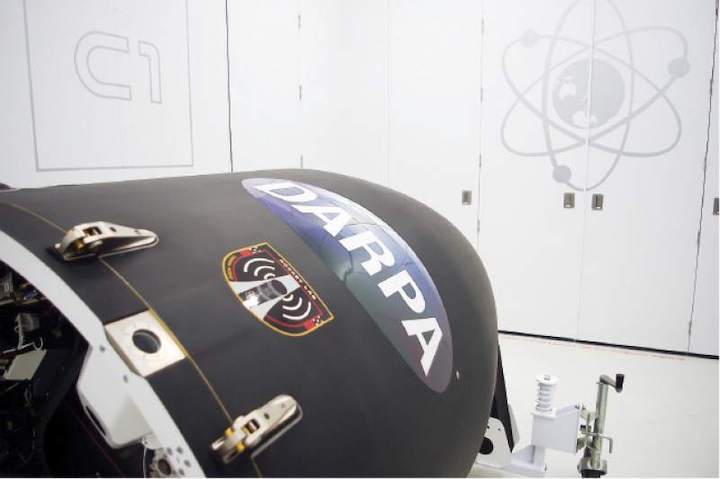
Rocket Lab’s Mahia rocket launch site will be back in action inside the next two weeks, following a delay to its latest planned launch.
The United States-based company had intended to launch the RF Risk Reduction Deployment Demonstration (R3D2) mission for the US’s military research government agency DARPA last month but the launch window was adjusted to the second half of March to provide the prime contractor with additional time to complete payload validation and verification.
Rocket Lab has designated a new 14-day window for the launch, from March 17 to March 30.
Within the window, lift-off will be scheduled between 11.30am and 3.30pm.
Lars Hoffman, Rocket Lab’s senior vice-president of global launch services, said the R3D2 mission highlights Electron’s (Rocket Lab’s orbital launch vehicle) critical role in enabling small satellite innovation by delivering responsive and tailored launch services to rapidly “space-qualify” new technologies.
“Small satellite technology is evolving at breakneck pace, and the R3D2 mission is a prime example of the significant capabilities small satellites can deliver now that frequent and reliable access to space is a reality on Electron.
“Our team has racked up three orbital missions and deployed 24 satellites already, but the R3D2 mission is particularly exciting. It marks the first dedicated Rocket Lab mission carrying a single satellite that maximises Electron’s nominal lift capability of 150kg.”
Quelle: gisborneherald
----
Update: 25.03.2019
.
Rocket Lab Scrubs Launch of Experimental DARPA Military Satellite
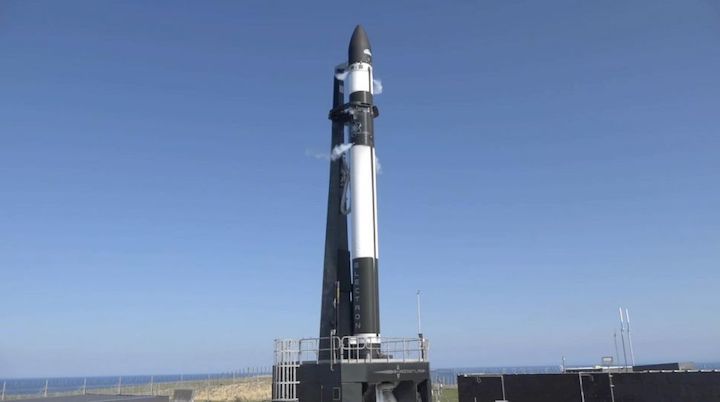
A fueled Rocket Lab Electron booster carrying the R3D2 antenna technology demonstration satellite for DARPA stands atop its Mahia Peninsula launch site in New Zealand during a launch attempt on March 24, 2019 EDT (March 25 New Zealand time).
The small-satellite launch company Rocket Lab called off the planned flight of an experimental satellite for the U.S. military Sunday (March 24) due to a video transmitter issue.
Rocket Lab was counting down to a 7:36 p.m. EDT (2336 GMT) launch of its Electron booster from Launch Complex 1 on New Zealand's Māhia Peninsula when the glitch occurred, the company said in Twitter update.
"The team has identified a video transmitter 13dB down with low performance," Rocket Lab said in the Twitter post. "It's not an issue for flight, but we want to understand why, so we're waiving off for the day."
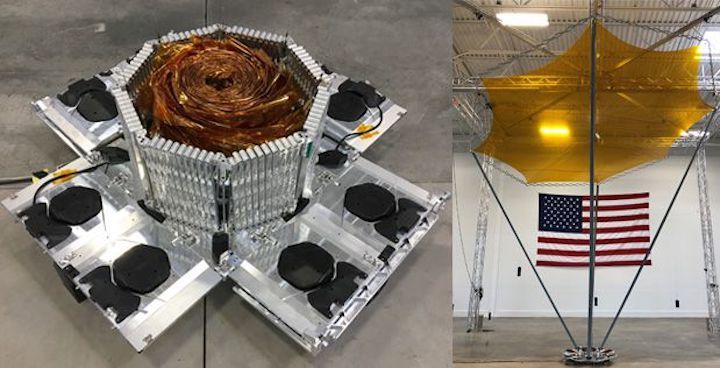
The R3D2 prototype spacecraft antenna is seen in packed and deployed positions. DARPA will launch the antenna on a test flight soon using a Rocket Lab Electron.
The Electron is carrying the prototype R3D2 space antenna in a test flight for the Defense Advanced Research Projects Agency.
R3D2's seemingly "Star Wars" droid-inspired name is short for Radio Frequency Risk Reduction Deployment Demonstration. The spacecraft carries a novel antenna design that is tightly packed for launch and will unfurl to a span of 7.3 feet (2.3 meters) once fully deployed.
The antenna is made of an ultra-thin Kapton membrane, which will be tested for its communications effectiveness on this flight, DARPA officials have said. The entire R3D2 satellite weighs about 330 lbs. (150 kilograms).
"R3D2 will monitor antenna deployment dynamics, survivability and radio frequency (RF) characteristics of a membrane antenna in low-Earth orbit," DARPA officials said in a statement. "The antenna could enable multiple missions that currently require large satellites, to include high data rate communications to disadvantaged users on the ground."
Quelle: SC
+++
Rocket Lab launch with DARPA’s R3D2 satellite rescheduled for Tuesday
Rocket Lab’s launch team canceled a launch attempt Sunday in New Zealand after discovering a misbehaving video transmitter on the Electron booster set to loft a small U.S. military satellite into orbit to test an innovative antenna design. Engineers rescheduled the mission for Tuesday (U.S. time).
The U.S.-New Zealand launch company announced the delay as the Electron counted down to a targeted liftoff time of 7:36 p.m. EDT (2336 GMT) Sunday.
“The team has identified a video transmitter 13dB down with low performance,” Rocket Lab tweeted. “It’s not an issue for flight, but we want to understand why, so we’re waiving off for the day.”
Peter Beck, Rocket Lab’s founder and CEO, added that the rocket was “technically good to fly, as we have redundant links, but we don’t know why the performance dropped and that makes me uncomfortable.”
In an update a few hours later, Rocket Lab said crews aim to replace the suspect video transmitter in time for a second launch attempt Tuesday (U.S. time). The four-hour launch window Tuesday will open at 6:30 p.m. EDT (2230 GMT).
In New Zealand, the launch window opens at 11:30 a.m. local time Wednesday.
The two-stage Electron rocket will launch the Defense Advanced Research Projects Agency’s Radio Frequency Risk Reduction Deployment Demonstration satellite into a 264-mile-high (425-kilometer) orbit, where the spacecraft will unfurl an antenna in an experiment to demonstrate how expandable reflector arrays could be stowed into volumes tight enough to fit on a small, relatively inexpensive rocket.
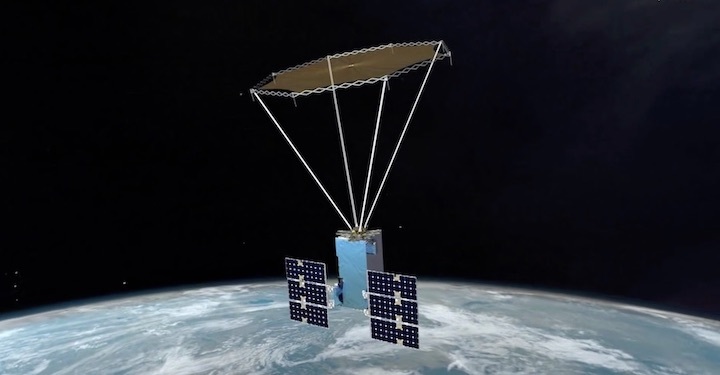
Known as R3D2, the $25 million satellite carries an antenna made of tissue-thin Kapton material, which will open to a diameter of nearly 7.4 feet (2.25 meters) in orbit.
The spacecraft was integrated by Northrop Grumman. R3D2’s spacecraft bus was provided by Blue Canyon Technologies of Boulder, Colorado, and the antenna was designed and built by MMA Designs in Louisville, Colorado.
The R3D2 mission is Rocket Lab’s first launch for the U.S. Defense Department, which is examining how to field more small satellites to provide the military with communications, battlefield surveillance, and other services, making the military’s spacecraft fleets more resilient to attacks and less expensive to design, build and launch.
Rocket Lab’s Electron rocket has launched four times since May 2017. After the Electron’s inaugural test flight fell short of orbit due to a ground tracking error, Rocket Lab has logged three straight successes delivering CubeSats to orbit for NASA, commercial companies and educational institutions.
Once it lifts off, the Electron rocket will head east from Rocket Lab’s privately-operated launch base on New Zealand’s North Island. The R3D2 satellite is set to deploy from the Electron’s upper stage around 53 minutes into the flight, kicking off the spacecraft’s planned six-month tech demo mission.
Quelle: SN
----
Update: 26.03.2019
.
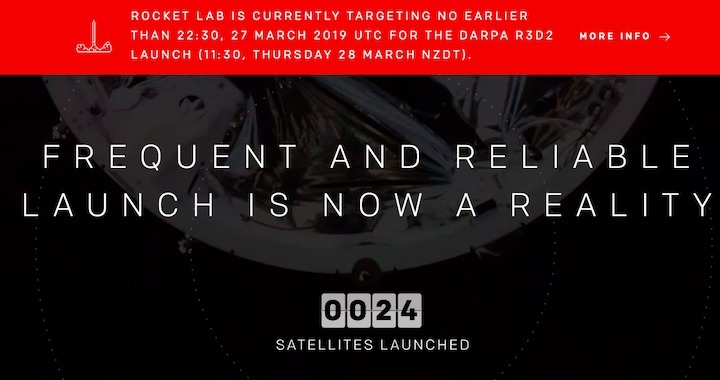
Quelle: RocketLab
----
Update: 27.03.2019
.
LAUNCH INFORMATION
Rocket Lab is currently targeting no earlier than 22:30, Thursday 28 March UTC (11:30 am, Friday 29 March NZDT) for the next Electron mission.
The mission is the Radio Frequency Risk Reduction Deployment Demonstration (R3D2) launch for DARPA.
The mission will lift-off from Launch Complex 1 carrying a prototype reflect array antenna designed to improve radio communications in small spacecraft.
Follow @RocketLab on Twitter for regular updates.
Launch window: Rocket Lab is currently targeting no earlier than 25 March UTC, and the launch window is open until 5 April 2019, UTC (6 April NZDT).
Launch timing: Launch attempts will only take place between 11:30 - 15:30 NZDT (22:30 - 02:30 UTC).
About Launch Complex 1 - Māhia Peninsula, New Zealand
Rocket Lab operates the world’s only private commercial orbital launch site, located on the Mahia Peninsula, New Zealand. From this site we can launch Electron 120 times per year, reaching a wide range of orbital inclinations from 39 degrees to Sun-Synchronous.
Quelle: RocketLab
----
Update: 29.03.2019
.
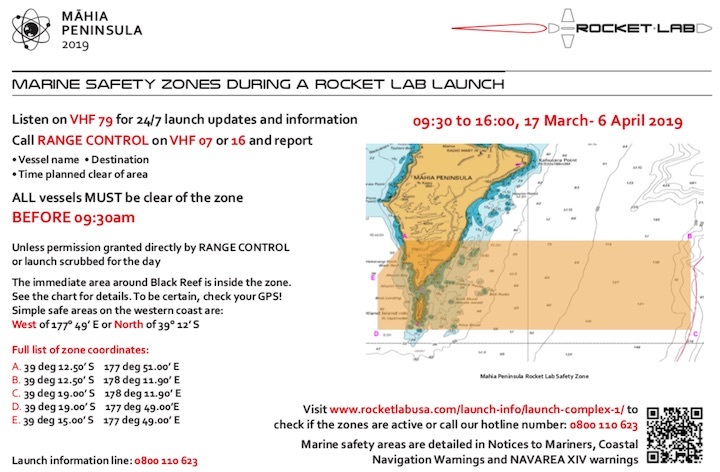
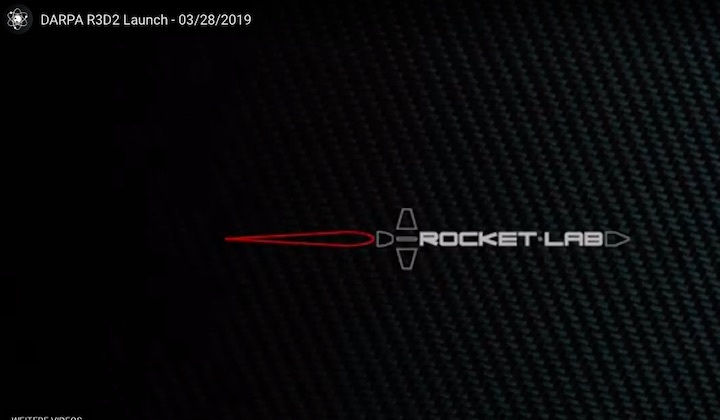
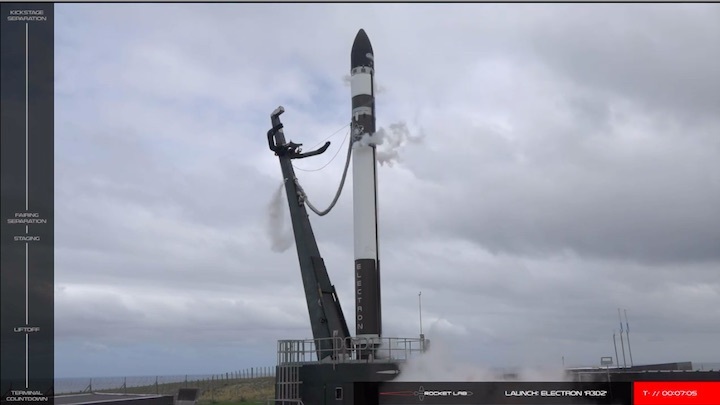
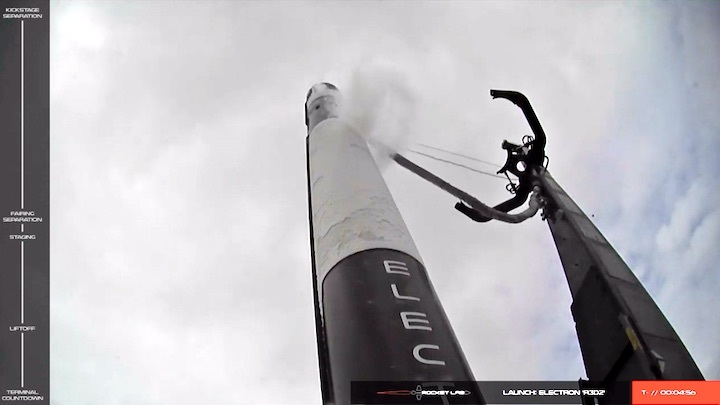
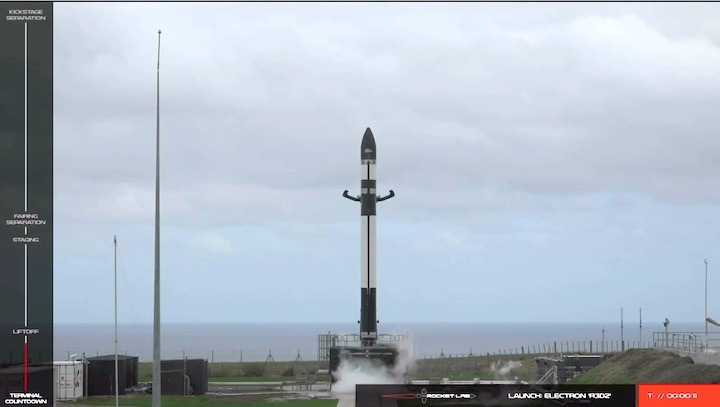
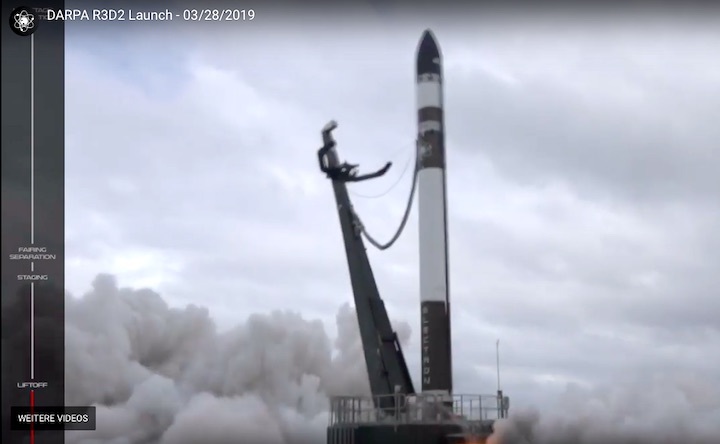
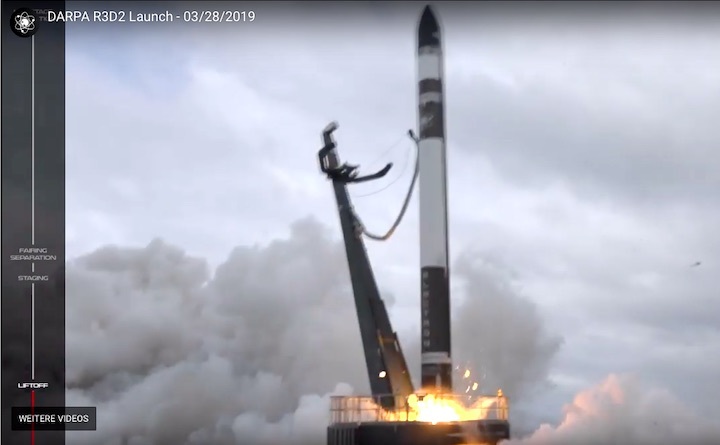
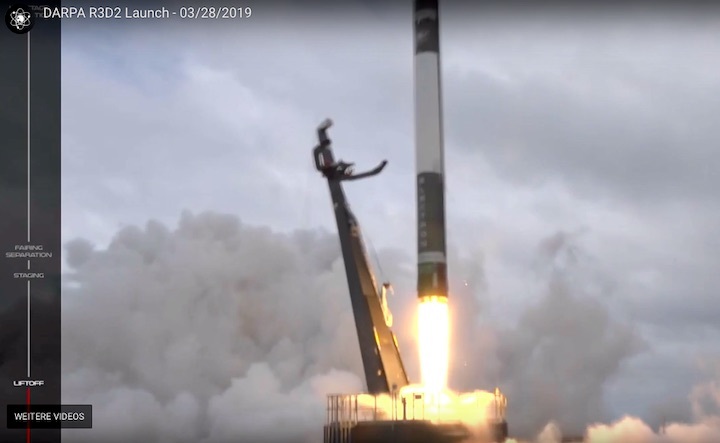
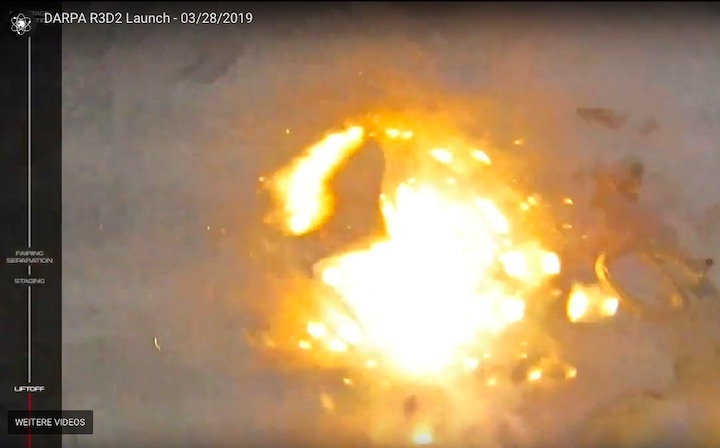
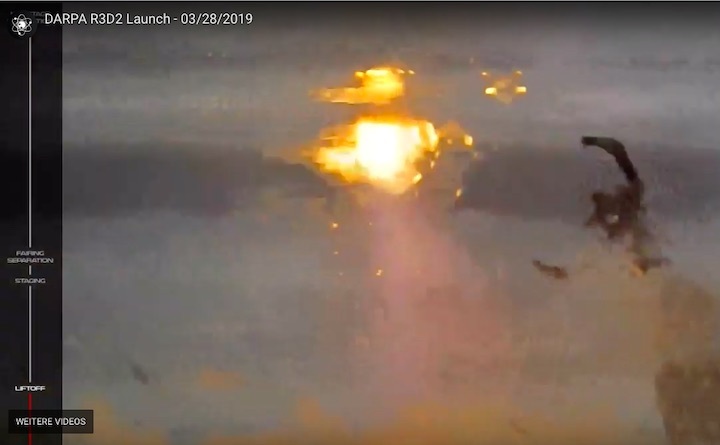
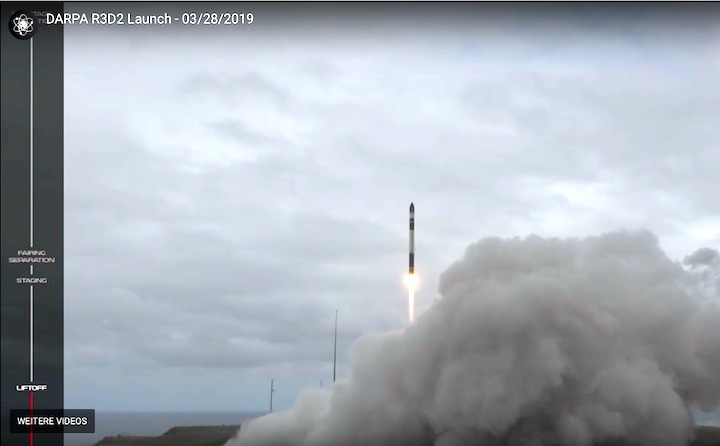
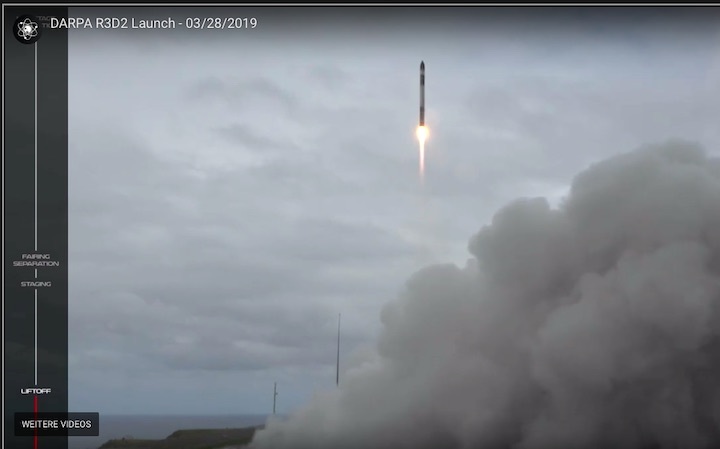
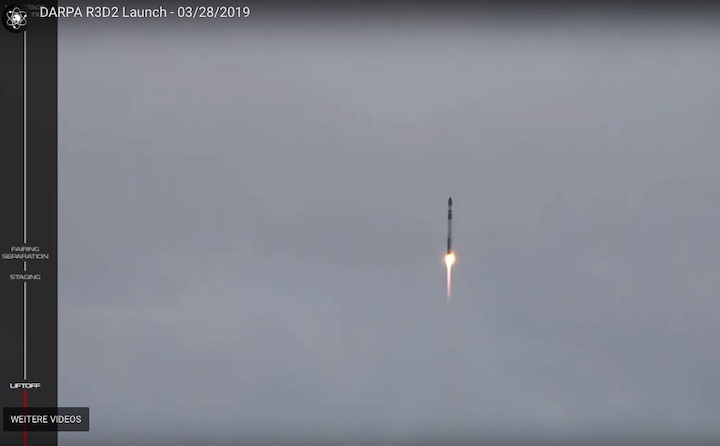
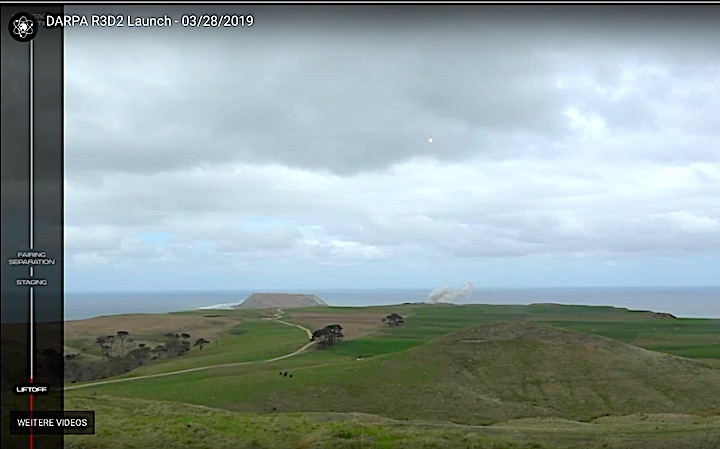
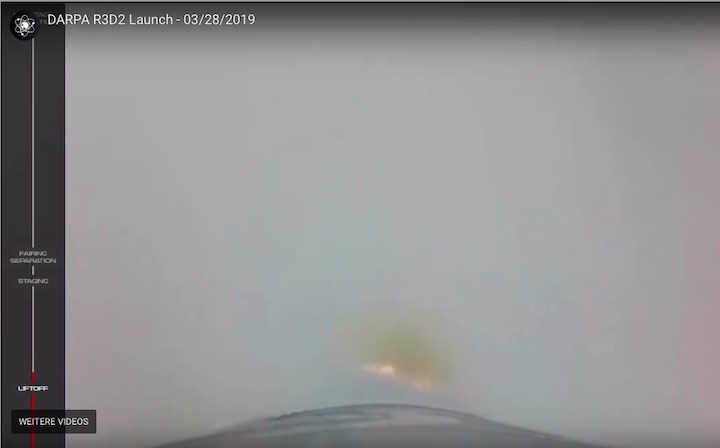
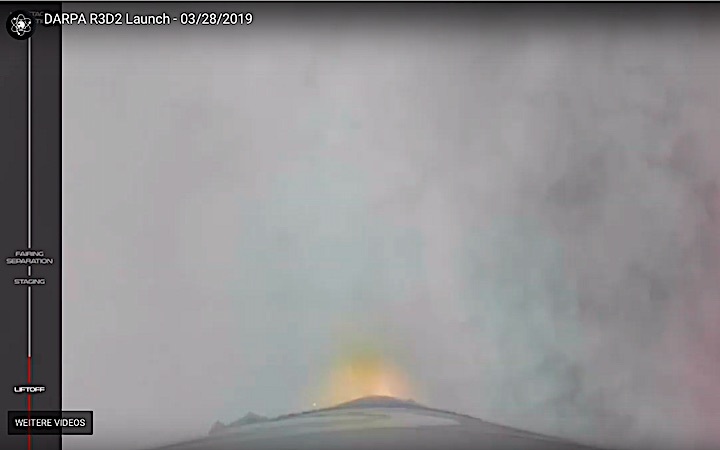

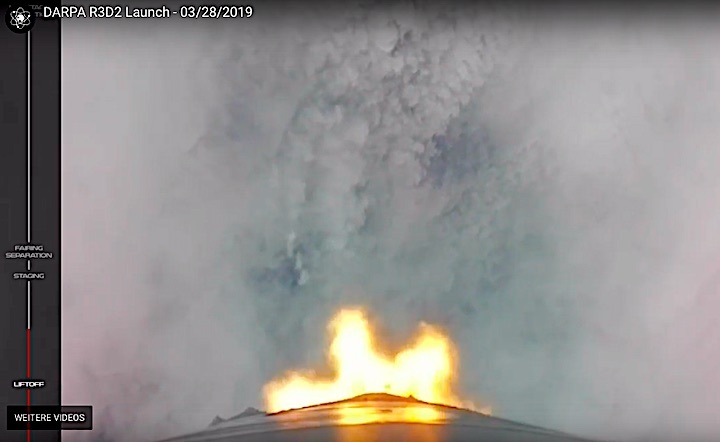
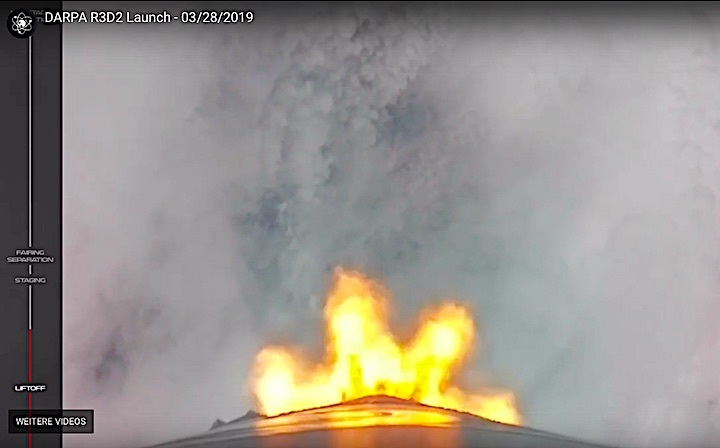
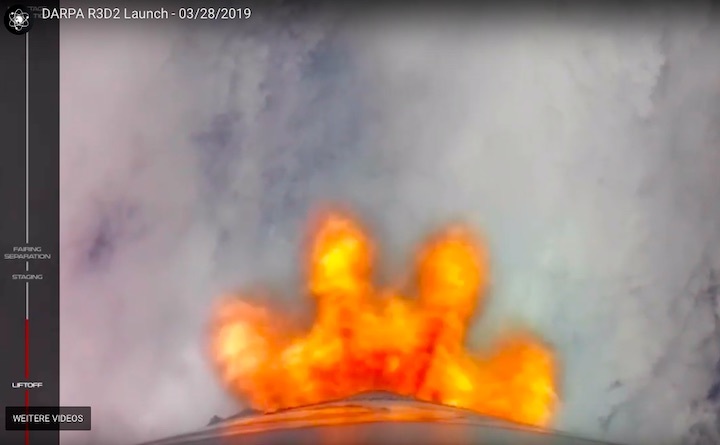
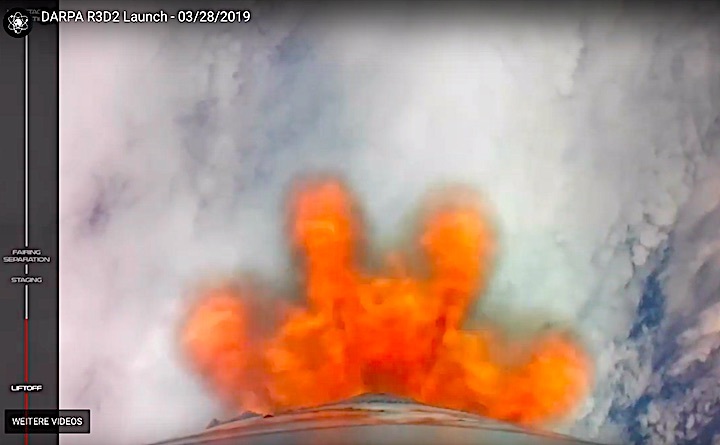
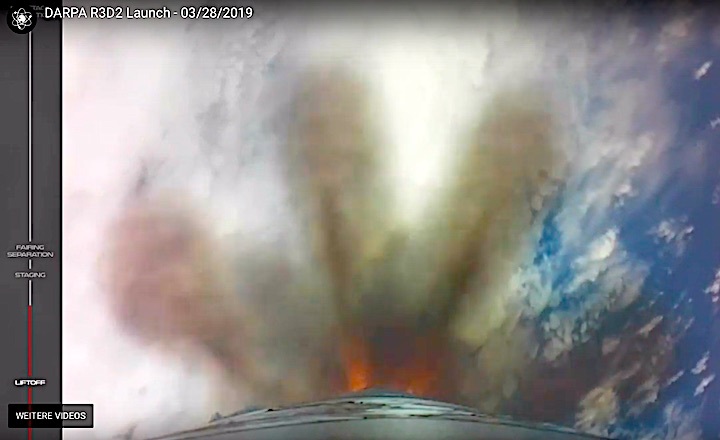
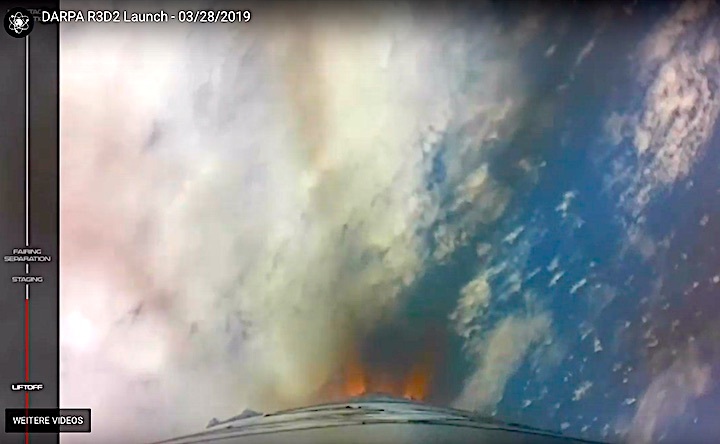






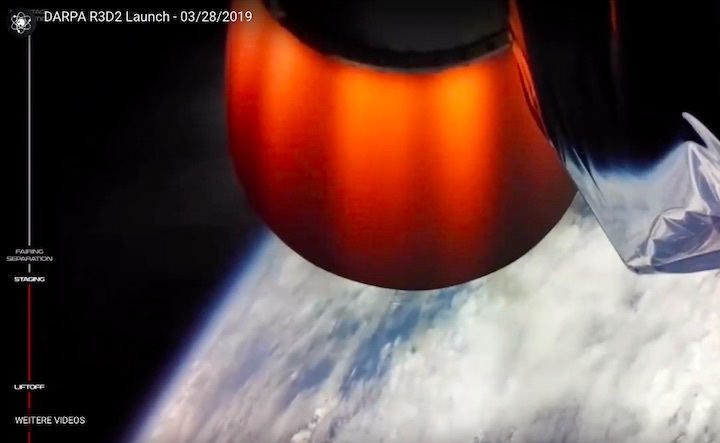
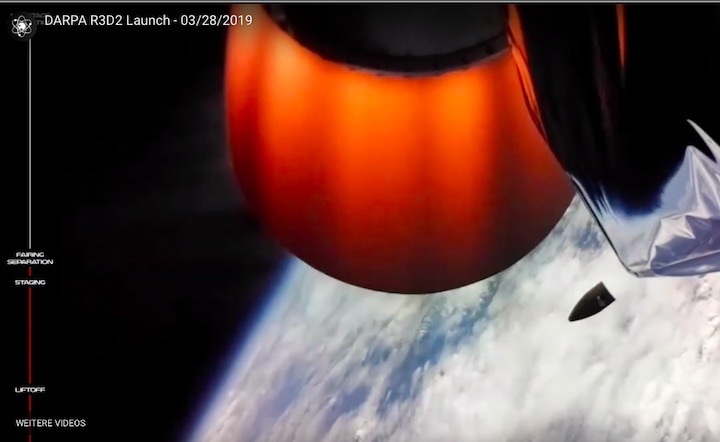
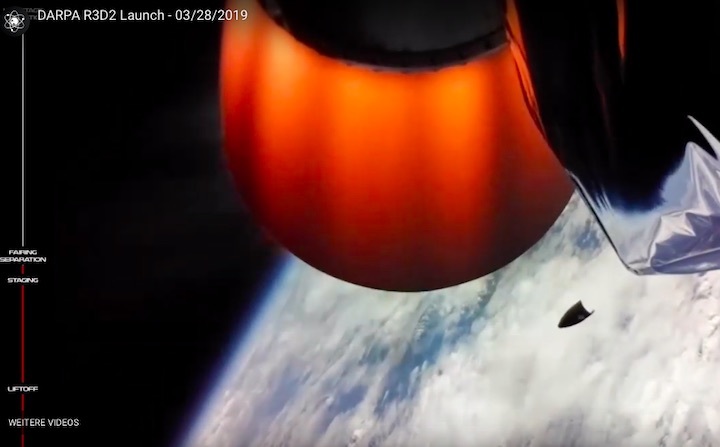
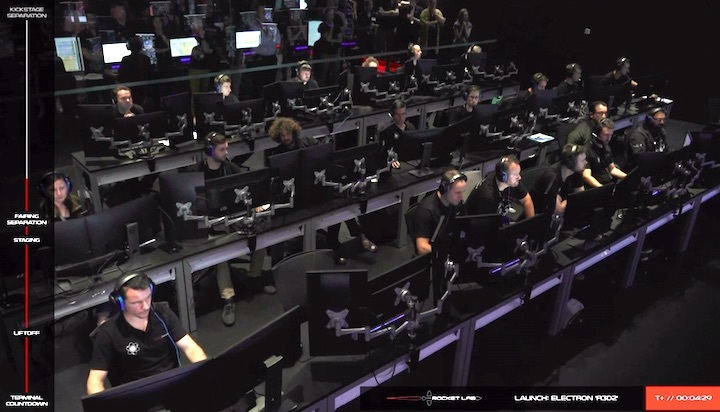
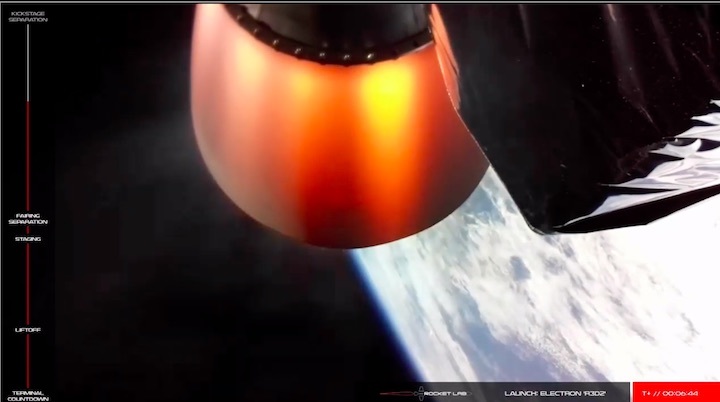
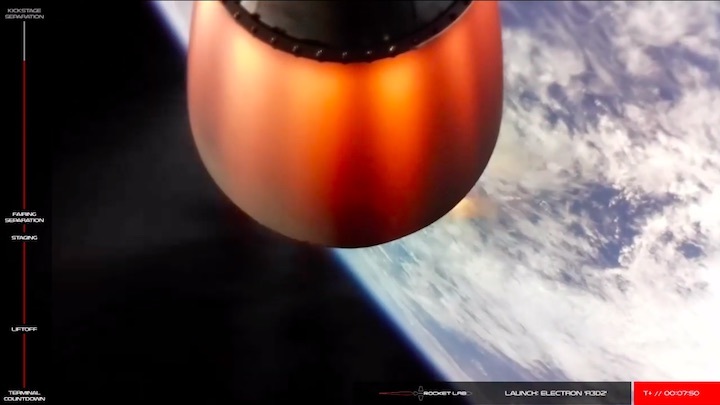
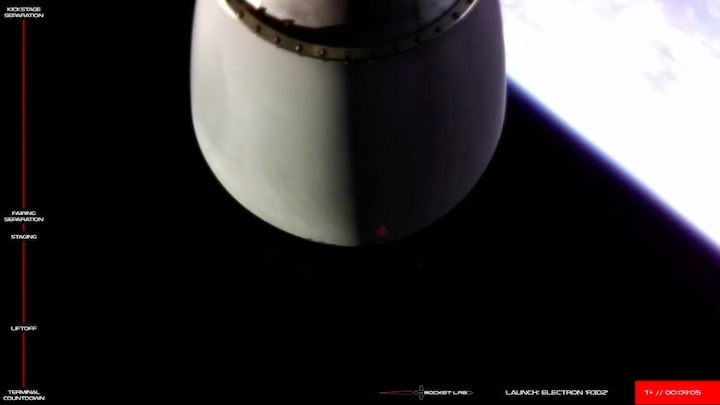
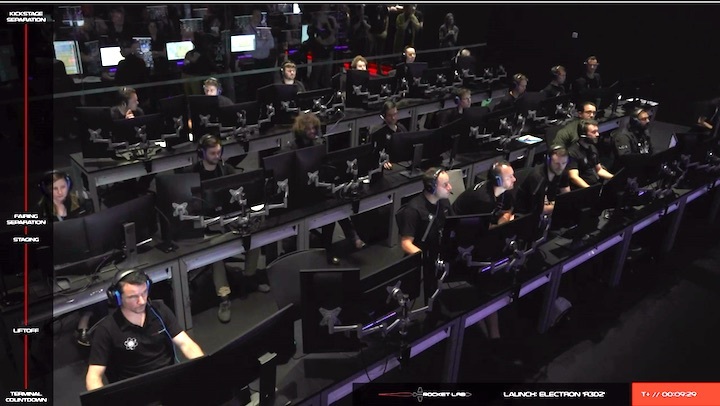
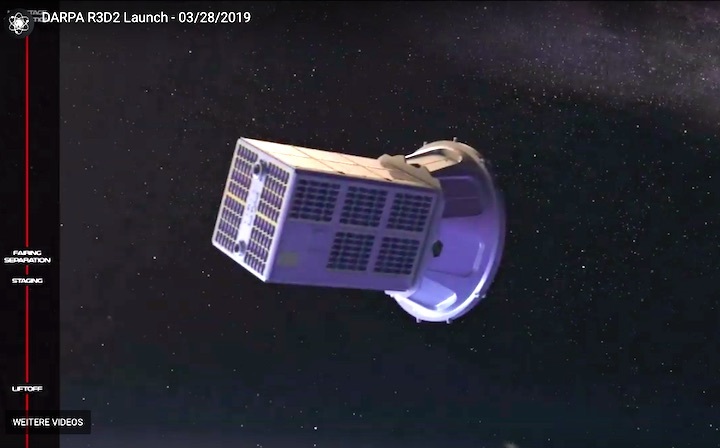
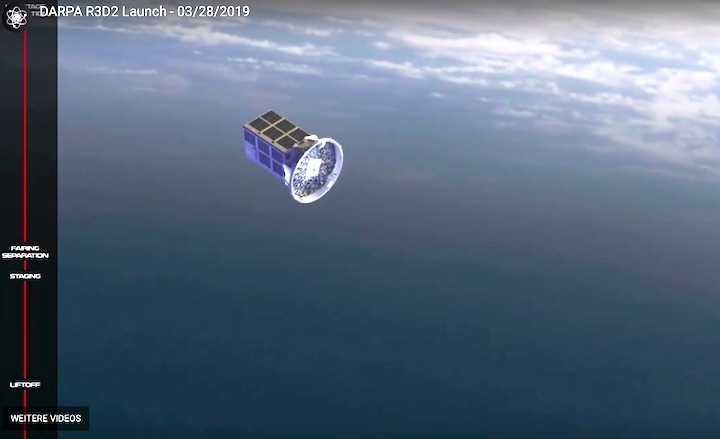
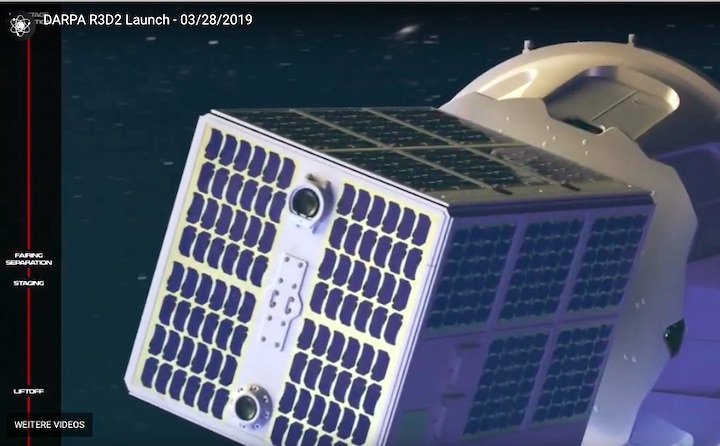
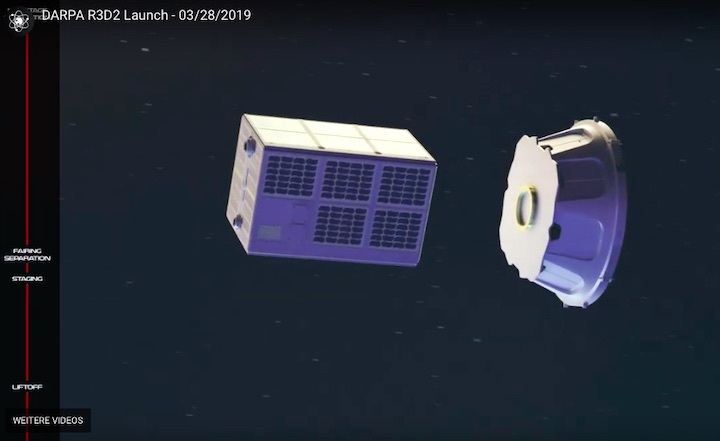
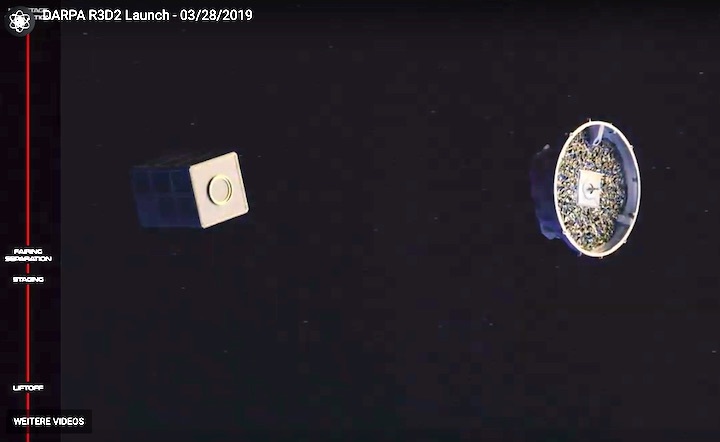
Quelle: RocketLab

